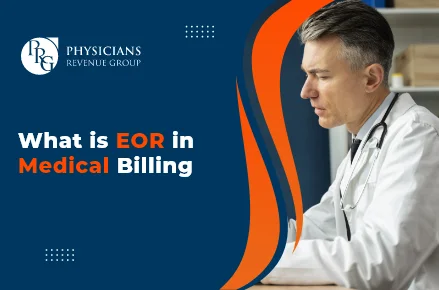
Email: info@prgmd.com | Call: +1 (630) 242-6474
Business hours: 9:00 to 5:00 | Monday to Friday
Email: info@prgmd.com | Call: +1 (630) 242-6474
Business hours: 9:00 to 5:00 | Monday to Friday

Table of Contents
ToggleNot all areas of the medical billing industry can tackle massive problems faced by healthcare professionals or even medical billing services companies. The EHR implementation and billing endeavors to resolve EHR system issues that complement highly qualified productivity. EHR systems are widespread in the medical industry, and software applications have become commonplace everywhere.
Electronic health records and medical billing are often used together. Both systems use the same data to perform their functions, and integration of the two is further logical. The two entities also effectively supplement the core functionality of each other. While the EHRs store essential patient data, which increases the accuracy of the entire billing process.
While EHR Implementation and Billing can work well and offer accuracy in billing operations, at the same time, EHRs and medical billing software serve different purposes.
1. The EHR solutions are structured to offer an electronic version of patient charts. EHRs serve as centralized data hubs of patient data; these include:
The EHRs facilitate healthcare professionals’ access to in-depth data for specific patients for evidence-based decision-making. Other than patient information processing, the EHR software also:
2. Medical electrical billing for the patient medical records software does look how it sounds. Electronic billing entails the automation of accounting and billing processes in healthcare organizations. Billing software also runs insurance verifications for verifying patient insurance eligibility before starting treatment. Furthermore, it can facilitate scrubbing claims for auditing claims and correcting coding errors before submitting reimbursement documents. Lastly, the software tracks insurance claims to ensure the providers complete the payments.
Typically, EHRs can work as standalone systems. Secondly, healthcare billing services necessitate integration with medical records. Thus, billing software is often coupled as an EHR or a practice management suite component.
While the EHR implementation and billing integrations take time, the investment pays off rather quickly. Furthermore, healthcare providers enjoy much smoother billing processes in addition to other advantages, including the following:
Without a doubt, the manual data entry is frustrating – it is:
EHR implementation and billing system integrations free you from entering the same data twice. Additionally, data from the patient records is necessary for billing claims, including the following:
-is transmitted to billing software; thanks to this, the claim submissions and processing also get faster.
Integrated EHR implementation and billing are convenient for use compared to separate solutions – additionally, user experience also gets better. According to recent reports, over 21 percent of primary medical specialties seek better quality reporting and billing administration tools.
By fusing multiple services into one system, you better facilitate billing and meet their needs.
The key HIPAA HER security measures include the following:
Share:
Categories
Recently Added

What is an ABN in medical billing?

What does a Clearinghouse do During Claims Submission?

What is EOR in Medical Billing?
We Would Love to Assist You!
We treat your data confidentially and don’t share any information with a third party.